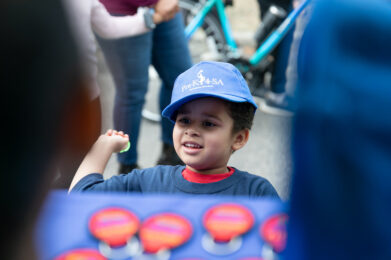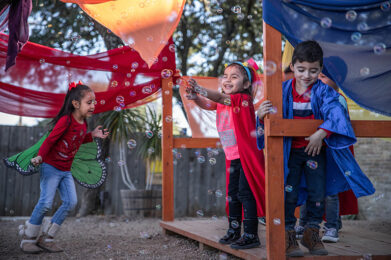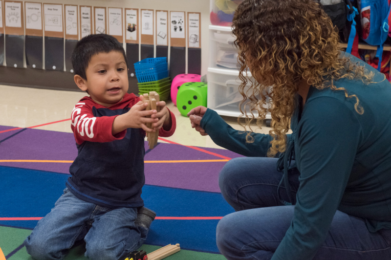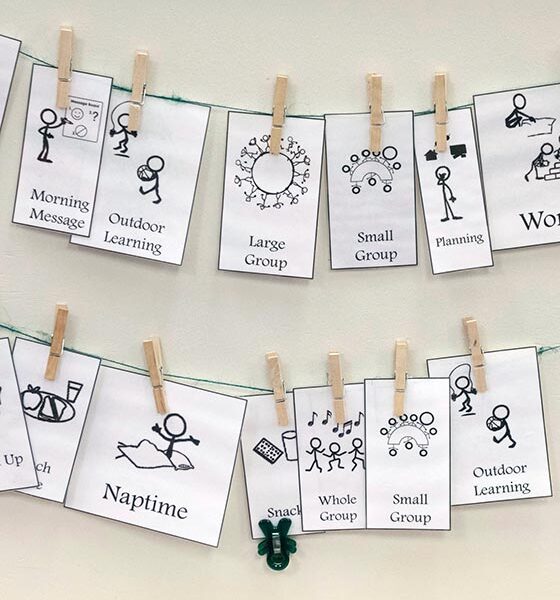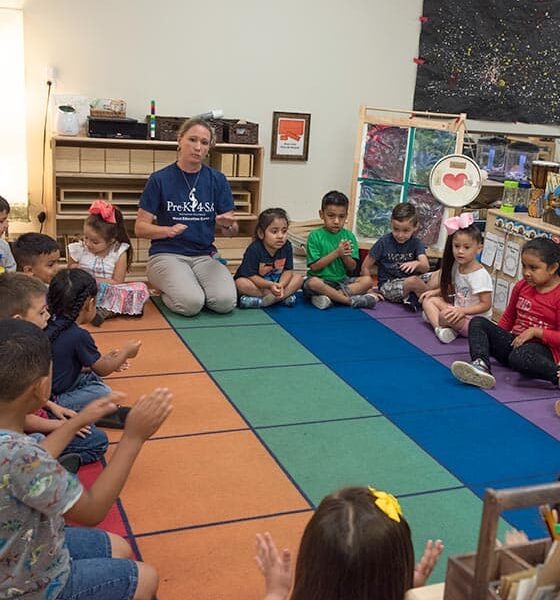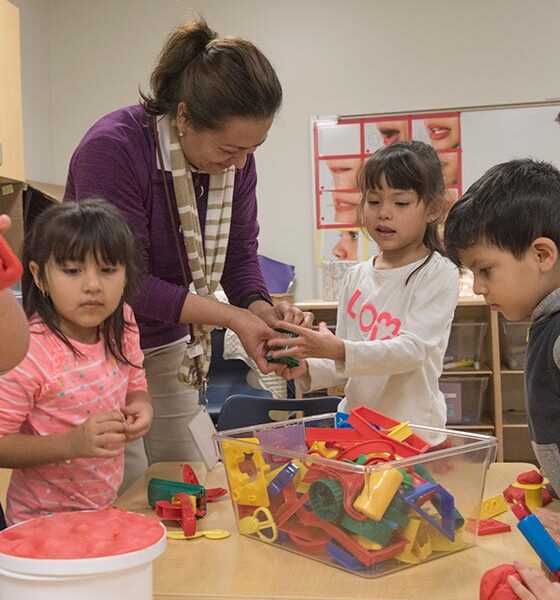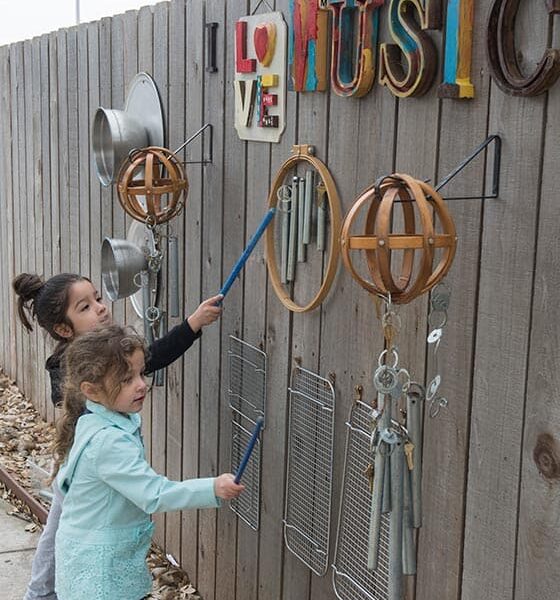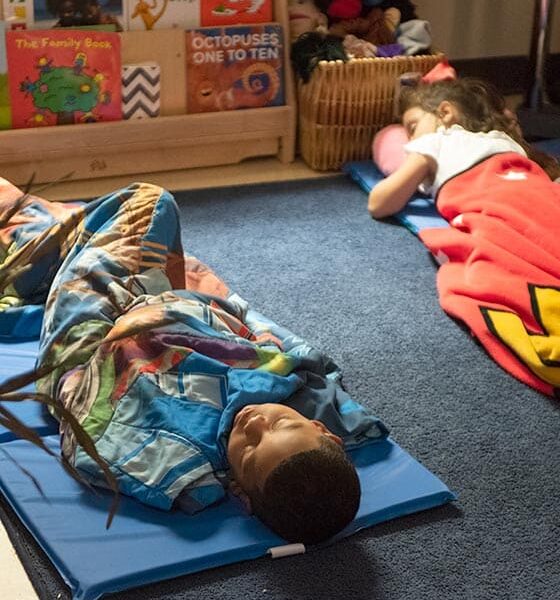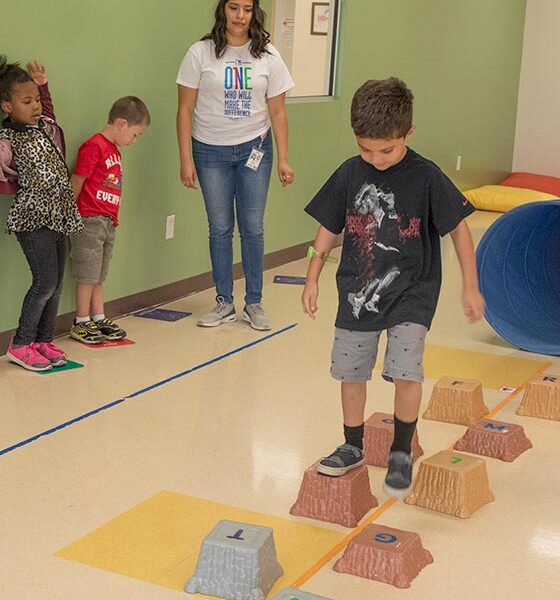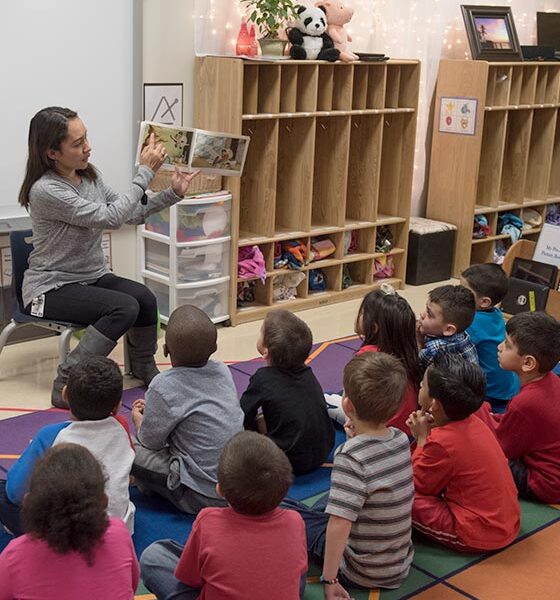Why Pre-K 4 SA
A Day at Pre-K 4 SA
Children are engaged in active learning From the minute they enter the door until they leave at the end of the day. Each step is strategically designed to build a strong academic foundation and critical thinking skills such as planning, problem-solving, and leadership.
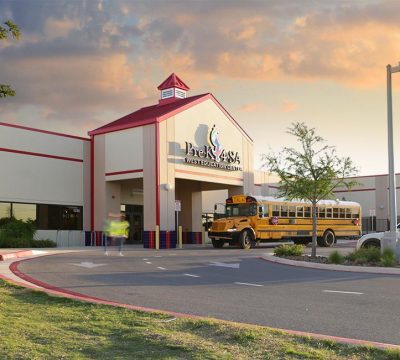
Areas of Focus
Arrival and Meal Time
The day begins with a nutritious breakfast served family-style. During meals, the children learn table manners, how to eat healthfully and engage in conversations that help them develop their language and vocabulary.
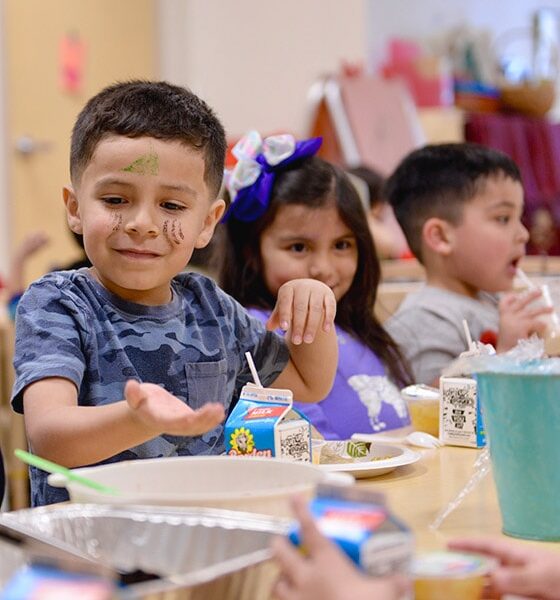
Day Preview
After breakfast, children gather to preview the day ahead and build a sense of community through Morning Message. Visual cue cards show what activities are planned for the day. Referring to the cards throughout the day helps children anticipate and prepare for changes, making for smoother transitions.
Large Group Activity
Children have an opportunity to build a sense of community by engaging in a child-led activity. Whether the leader chooses to dance, sing a favorite song, or play a game, the whole class joins in the fun.
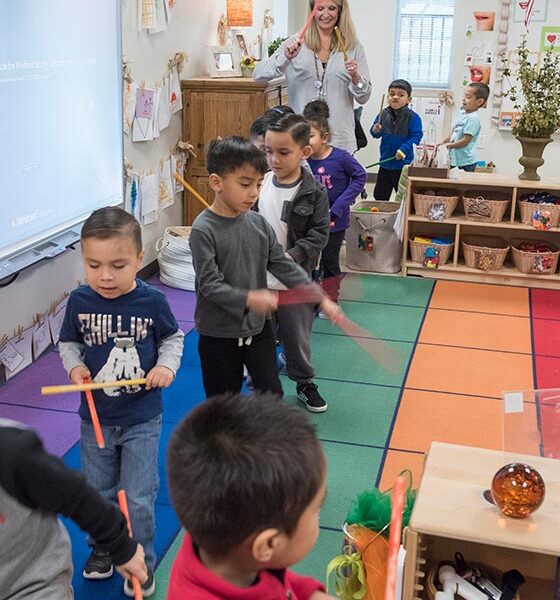
Individual Plan & Work Time
Play is a child’s work. Children at Pre-K 4 SA get extended work time each day. But before getting to work, each child makes a strategic plan of action. Teachers advance children’s learning by observing the children’s interactions, listening intently while children talk, and asking questions that build on children’s thinking.
Review Time
At the end of individual time, the children gather to review their work. The teacher gives each child an opportunity to recall what happened during work time, reflect on how the plan was executed, and discuss what was learned. This plan-do-review sequence helps children develop executive function, an important brain process.
Small Group Time
Children are placed into two groups. Each teacher works with one of the groups to provide a lesson that draws from the children’s interests and is aligned with the Texas Pre-K Guidelines. The teachers plan small group lessons based on the children’s progress and learning from the day before. Teachers individualize lessons for each child by skillfully differentiating the materials.
Outdoor Learning
Children spend a minimum of 60 minutes outside each day in one of our outdoor learning environments.
Lunch & Rest Time
After a busy morning of work, it’s time for family style lunch with more social engagement and then a short rest time to help children recharge for the afternoon.
Large Group Activity
After rest, a child leads the class in an activity to get their muscles moving.
Individual Plan & Work Time
Children once again have the opportunity to learn new skills and build executive function through inquiry-based planning and play.
Story Time
The teacher focuses on literacy skills while reading a book or telling a story. Afterward, children have the opportunity to express themselves through music and movement.
Extended Day Program
For children who stay for the extended day program while their parents are at work or at school, there is more active learning in the classroom, time in the outdoor learning environment, and quality interactions that build language, academic, and social skills.
